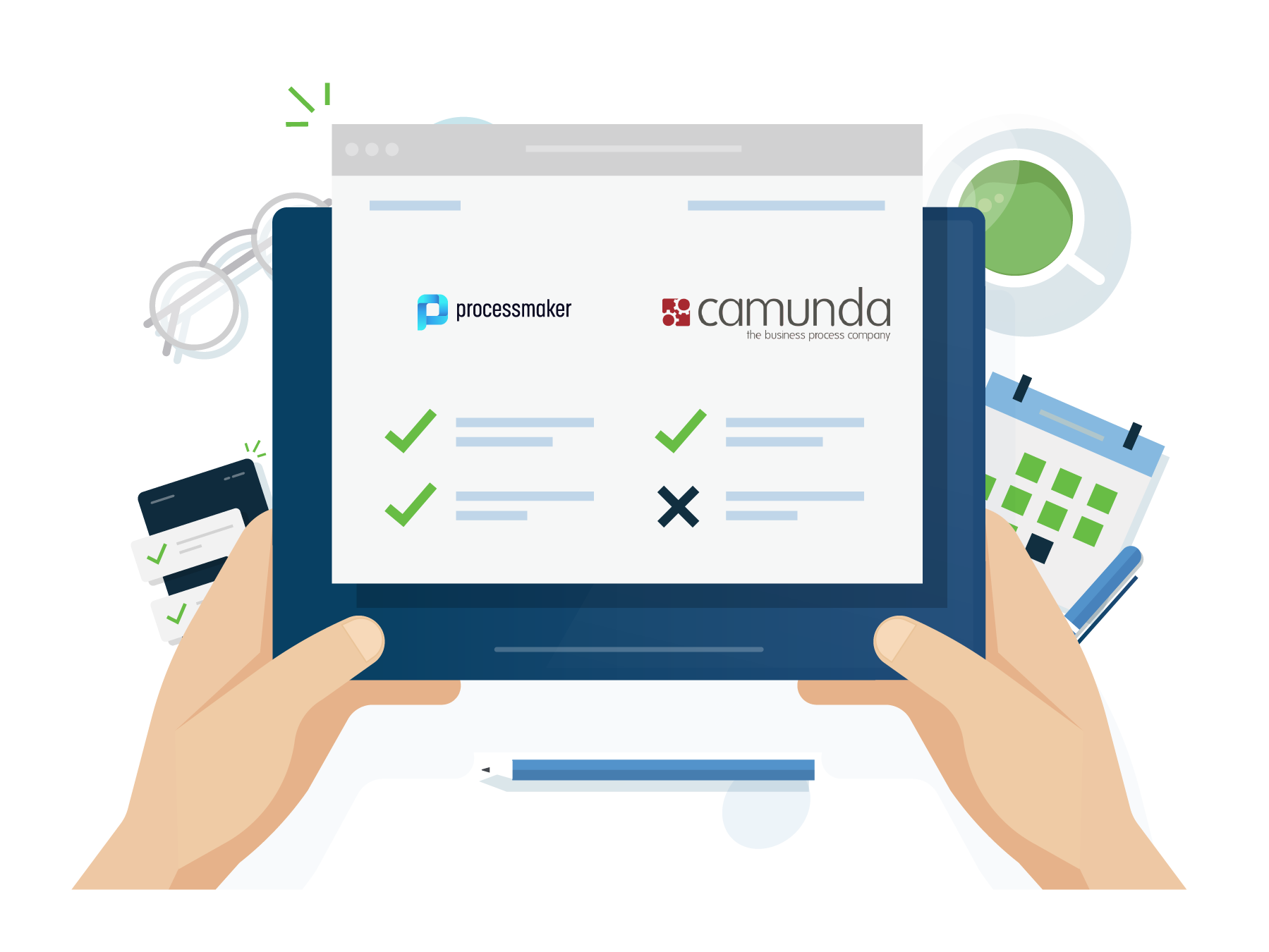Looking for Camunda Alternatives?Check out our free Camunda comparison
We conducted thorough reviews of both platforms that highlighted how each handled the following: process design flows and optimization, business rules, process variation, visualizations, and the ability to rapidly develop and deploy solutions. Both are used by many of the world’s largest organizations to automate core business processes to achieve the highest levels of efficiency.
 |
vs |  |
|---|---|---|
4.4/5 468 reviews |
QUICK OVERVIEW | 4.4/5 69 reviews |
Get Your Guide

Get the guide now.
Both platforms have their fair share of pros and cons, but a quality BPMs empowers technical and non-technical users with an intuitive interface to design and interact with workflows, easily integrate with third party systems, develop custom functionality with low-code, have easy access to support and training, and offer robust process management and optimization tools. We hope this comparison guide helps you identify the best platform for solving your business challenges.
| Reviews | |||
|---|---|---|---|

| vs | 
| |
 |
4.3/5 23 reviews | 5/5 1 review | |
 |
4.3/5 270 reviews | 4.4/5 62 reviews | |
 |
4.5/5 175 reviews | 4.7/5 6 reviews | |
Camunda Pros & Cons
| Pros | Cons |
|---|---|
| Open Source. Camunda offers a plentiful inventory of tools under its open source, free model. Its popular Modeler desktop application helps developers create visual models of design workflows, edit element templates, and edit all properties necessary for technical execution. |
Open-source version provides little visibility into workflows. Although the free open-source option is attractive, many of the tools that make a BPM platform a productive addition to an organization are only available through the paid Enterprise platform. Camunda locks the ability to monitor workflows, identify process bottlenecks, and access reporting behind paid upgrades. |
| Easy-to-use interface for experienced developers. Camunda does not advertise itself as a low-code platform, but touts a welcome UX for experienced Java developers. Despite requiring a significant amount of coding knowledge, the platform is a neat and clean, easyto-use interface. |
Additional support locked behind paywalls. Another downside of the popular open-source version is the high cost of support. Unfortunately, training sessions are only available at a pricey 1399,00€ / $1499.00USD each. |
| Flexible scalability supplements monolithic platforms. Faced with the cumbersome impracticality of globally scaling a monolith, organizations appreciated Camunda’s lightweight modularity. They were able to deploy an array of smaller processes that addressed regional needs without reinventing the wheel. |
Requires significant technical experience. Advanced Java users laud Camunda’s engine, but admit its logic is not well suited for regular business users. Its low-code workflow is poorly rated, making it a difficult platform to navigate for non-IT professionals. |
ProcessMaker Pros & Cons
| Pros | Cons |
|---|---|
| True Low-Code Environment but with additional Developer tools. Design and deploy without coding knowledge needed. However, for developers that want to create custom scripts and packages to run in their environment, ProcessMaker has a full featured web IDE for designing scripts in almost any programming language. |
More Coding Knowledge Equals Better Feature Usage. An IT professional does have to write the original script tasks that serve as the building blocks for many processes, which can then be reused indefinitely by business users. |
| Pricing. Reportedly it is one of the more affordable enterprise BPM solutions. |
Single Cloud Support. ProcessMaker seems to lean toward AWS at present and its new solution is not marketed for On Premise. However, ProcessMaker is offering a unique hybrid solution with the ability to store sensitive data on premise with a connection to your cloud deployment. |
| Thorough Training and Professional Services, and Support. Numerous reviews across G2 Crowd, Capterra, and Gartner Peer Insights cite positive reception of training and support as a major factor in sticking with ProcessMaker. |
Technical Installation on Premise. ProcessMaker is built for the cloud. For users that want to run the open source on premise they will find installation difficult and all the cool enterprise features are missing in the open source. The open source core, however, is well documented and ideal for inclusion in other enterprise products. |
Discover how leading organizations utilize ProcessMaker to streamline their operations through process automation.